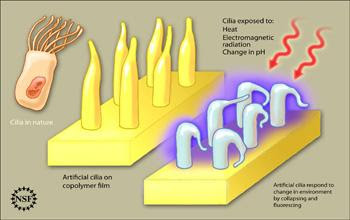
Sunday, October 3, 2010
Saturday, October 2, 2010
Saturday, September 11, 2010
Sunday, September 5, 2010
Friday, August 6, 2010
Great ball of fire
 On August 1, 2010, almost the entire Earth-facing side of the sun erupted in a tumult of activity. This image from the Solar Dynamics Observatory of the news-making solar event on August 1 shows the C3-class solar flare (white area on upper left), a solar tsunami (wave-like structure, upper right), multiple filaments of magnetism lifting off the stellar surface, large-scale shaking of the solar corona, radio bursts, a coronal mass ejection and more.
On August 1, 2010, almost the entire Earth-facing side of the sun erupted in a tumult of activity. This image from the Solar Dynamics Observatory of the news-making solar event on August 1 shows the C3-class solar flare (white area on upper left), a solar tsunami (wave-like structure, upper right), multiple filaments of magnetism lifting off the stellar surface, large-scale shaking of the solar corona, radio bursts, a coronal mass ejection and more.This multi-wavelength extreme ultraviolet snapshot from the Solar Dynamics Observatory shows the sun's northern hemisphere in mid-eruption. Different colors in the image represent different gas temperatures. Earth's magnetic field is still reverberating from the solar flare impact on August 3, 2010, which sparked aurorae as far south as Wisconsin and Iowa in the United States. Analysts believe a second solar flare is following behind the first flare and could re-energize the fading geomagnetic storm and spark a new round of Northern Lights.
Credit: NASA/SDO/AIA
Wednesday, August 4, 2010
Wednesday, July 7, 2010
Monday, June 28, 2010
MIT leads the first team to study a Kuiper Belt object during a stellar occultation Occultation provided enough data to determine the KBO’s size and a
Rensselaer Polytechnic Institute Researchers Develop Ultra-Simple Method for Creating Nanoscale Gold Coatings
 Researchers at Rensselaer have developed a new, ultra-simple method for making layers of gold that measure only billionths of a meter thick. As seen in the research image, drops of gold-infused toluene applied to a surface evaporate within a few minutes and leave behind a uniform layer of nanoscale gold. The process requires no sophisticated equipment, works on nearly any surface, takes only 10 minutes, and could have important implications for nanoelectronics and semiconductor manufacturing.
Researchers at Rensselaer have developed a new, ultra-simple method for making layers of gold that measure only billionths of a meter thick. As seen in the research image, drops of gold-infused toluene applied to a surface evaporate within a few minutes and leave behind a uniform layer of nanoscale gold. The process requires no sophisticated equipment, works on nearly any surface, takes only 10 minutes, and could have important implications for nanoelectronics and semiconductor manufacturing.
Saturday, May 1, 2010
Jason Karp Wins Research Expo 2010 Rudee Outstanding Poster
Congratulations to Jason Karp, the electrical engineering PhD student who won the top prize -- the Rudee Outstanding Poster Award -- at Research Expo 2010 for his new solar concentrator design. Read the abstract at Poster #98 at http://www.jacobsschool.ucsd.edu/re/ Related Link »
Bizarre matter could find use in quantum computers Rice physicists: Odd electron mix has fault-tolerant quantum registry
Friday, January 29, 2010
La vraie couleur des dinosaures
Comme leurs descendants les oiseaux, les théropodes étaient pourvus de plumes colorées, selon une découverte de paléontologues britanniques et chinoi
 Dans un gisement vieux de 100 millions d’années situé dans le nord-est de la Chine, une équipe de paléontologues ont exhumé les plumes fossilisées de théropodes.
Dans un gisement vieux de 100 millions d’années situé dans le nord-est de la Chine, une équipe de paléontologues ont exhumé les plumes fossilisées de théropodes.
 Dans un gisement vieux de 100 millions d’années situé dans le nord-est de la Chine, une équipe de paléontologues ont exhumé les plumes fossilisées de théropodes.
Dans un gisement vieux de 100 millions d’années situé dans le nord-est de la Chine, une équipe de paléontologues ont exhumé les plumes fossilisées de théropodes.
Subscribe to:
Posts (Atom)































